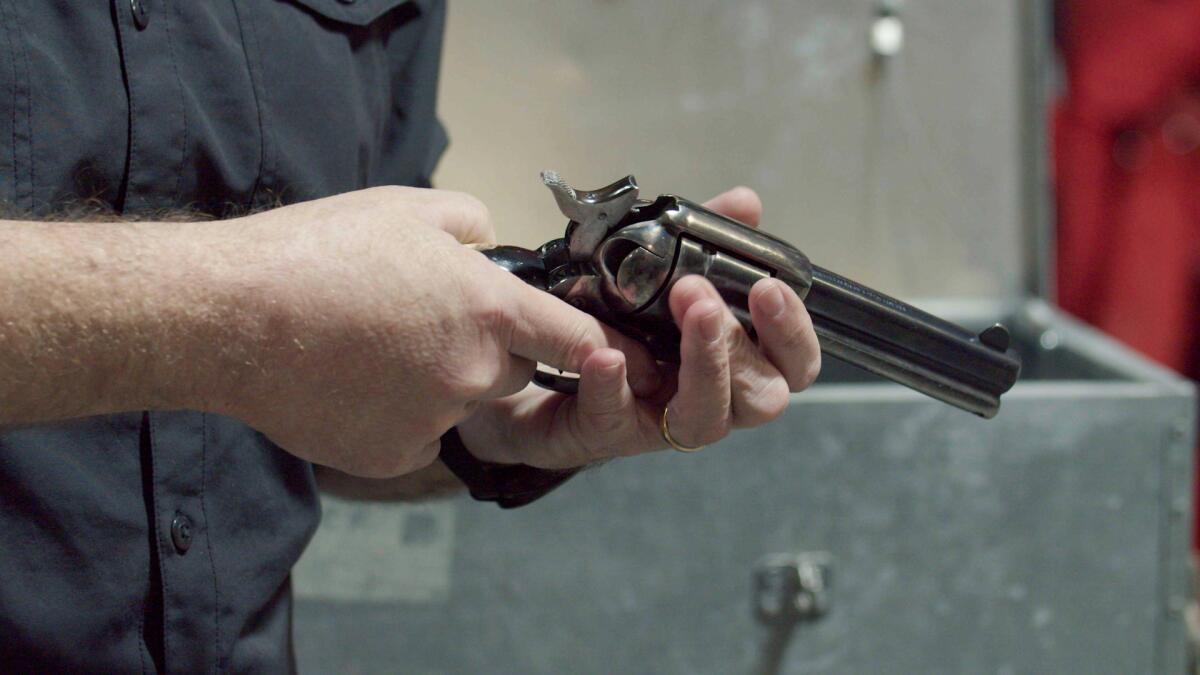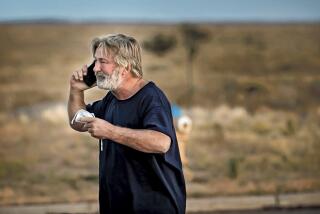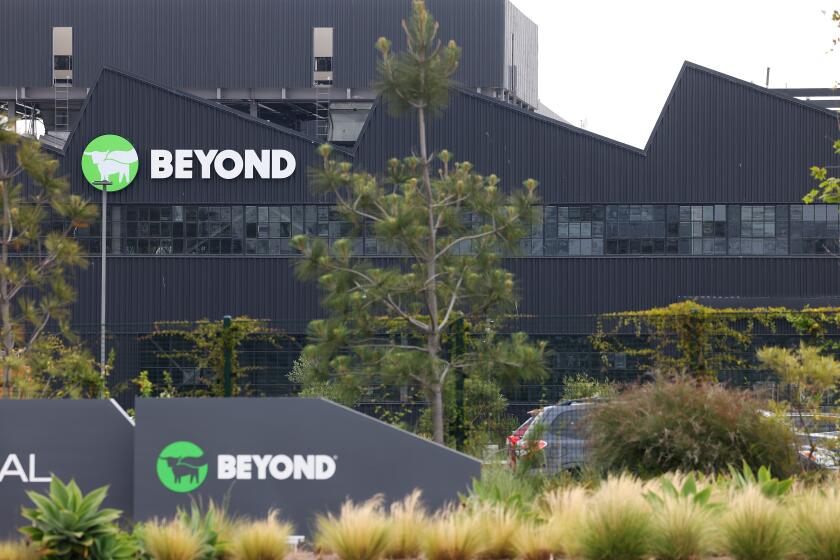Rules on how prop guns are used on film sets are about to change after âRustâ shooting. Hereâs why

The way firearms are used on film and television sets is about to change in the wake of the âRustâ accident, where actor Alec Baldwin inadvertently shot and killed cinematographer Halyna Hutchins with a prop gun.
An influential industrywide labor-management committee, composed of union and studio representatives, is weighing revisions to so-called safety bulletins that dictate how guns and ammunition should be handled in the entertainment industry, according to people with knowledge of the talks who were not authorized to speak publicly.
Among the possible revisions: requiring armorers to be present when weapons are handed over to actors and providing the crew with a glossary of terms used by armorers on sets, one of the people said.
âSafety Bulletins #1 and #2 are currently under revision,â Matthew Antonucci, management co-chair of the Industry-Wide Labor-Management Safety Committee, said in a statement. âBecause that process is not yet complete it would be inappropriate to comment further at this time.â
After the family of Halyna Hutchins settled their wrongful death suit with the producers of âRustâ including Alec Baldwin, what does it mean for any criminal case?
While the talks are still in their early stages, the revisions of the bulletins would be the first since 2003.
The bulletins have come under scrutiny since the tragedy on the low-budget western in New Mexico last fall, as the industry grappled with how such an accident could happen. Questions remain about how a live bullet was on set and loaded into the gun, ultimately killing Hutchins and wounding director Joel Souza.
The film and television industry has compiled numerous bulletins with guidelines for how to manage dangerous practices on set. There are bulletins that instruct crews on how to be safe using helicopters, motorcycles, animal handling, venomous reptiles or even poisonous plants.
Safety Bulletin #1 deals with the use of firearms and blank ammunition on sets.
It includes rules such as never having live ammunition on set or placing a finger on the trigger until ready to shoot; and requiring that the prop master or armorer inspect the weapon before and after each firing.
Safety Bulletin #1 â which is attached to call sheets for all the crew â requires that the prop master or other appropriate personnel handle firearms, and states that only a âqualified personâ can load firearms just before a scene. Actors working nearby should be able to observe the loading of the gun, it says.
Currently, the protocol is that a prop master, or in their absence an armorer, checks the weapon before and after each firing. But there arenât any detailed steps specifying how a gun should be handed to an actor.
Typically an armorer will demonstrate clearing and loading a gun in front of the cast and crew when the prop is ready to be used and then take it back into their possession. And if an assistant director is inspecting a gun, the armorer or prop master is present.
However, after the âRustâ accident, committee members believe wording needs to be added to clarify safe procedures for handing over weapons to actors.
In the case of âRust,â armorer Hannah Gutierrez Reed was outside the church where the fatal scene took place, according to police interviews. She has denied wrongdoing in the case.
Assistant director Dave Halls took a gun from a cart, called out âcold gunâ to indicate the gun was safe to use, and handed it to Baldwin, but did not check all the rounds in the gun first, according to the affidavits. Hallsâ attorney Lisa Torraco disputed the version of events described in the affidavits.
An assistant director is in charge of safety on a film set but their role is not specified in the safety bulletins.
More to Read
Inside the business of entertainment
The Wide Shot brings you news, analysis and insights on everything from streaming wars to production â and what it all means for the future.
You may occasionally receive promotional content from the Los Angeles Times.












